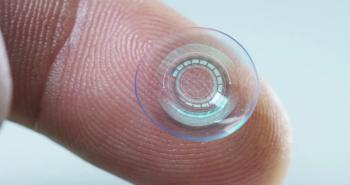
How TFOS brought dry eye to the forefront of optometry
Nowadays, you are unlikely to read a journal or go to a meeting without hearing the importance of dry eye disease in our practices and for our surgical patients. This was not always the case. I want to introduce you to the Tear Film and Ocular Surface Society (TFOS) and the brains behind it: David Sullivan, PhD, and his family- Rose, Ben, and Amy-who dedicate their lives to help us better understand dry eye disease.
The views expressed here belong to the author. They do not necessarily represent the views of Optometry Times or UBM Medica.
Nowadays, you are unlikely to read a journal or go to a meeting without hearing the importance of
I want to introduce you to the
Laying the groundwork
The first TFOS Symposium was held in 1992 and resulted in the publication of a 700-page book, Lacrimal Gland, Tear Film and Dry Eye Syndromes. Following this initiative, Michael Lemp, MD, led the National Eye Institute (NEI)/Industry Workshop in 1995 to define dry eye as a disease of the ocular surface. Then a second TFOS edition of Lacrimal Gland, Tear Film and Dry Eye Syndromes, expanded to more than 1,000 pages, fostered a better understanding of this complicated disease. In 2000, TFOS was officially chartered as a non-profit organization dedicated to moving the understanding of this complex disease forward.
TFOS’s mission is to advance the research, literacy, and educational aspects of the scientific field of the tear film and ocular surface. Today, TFOS has a distribution and outreach to more than 80 countries, and this network continues to grow. You can join the group for free-visit
Since the founding of TFOS, the Sullivan family has been busy organizing, running, and raising funds for the society's four workshops: Dry Eye Workshop (DEWS), Workshop on Meibomian Gland Dysfunction, Contact Lens Discomfort Workshop, and DEWS II-which is due for release in 2017. Some of the leading minds in optometry have been chosen to chair these initiatives, including Kelly Nichols, OD, MPH, PhD, FAAO, and Jason Nichols, OD, MPH, PhD, FAAO.
More from Dr. O'Dell:
Since 2007 and the release of DEWS, there has been a significant increase in dry eye research, prompting better diagnostics and treatments.
TFOS brings together specialists who share a common passion where titles, politics, and past accolades are set aside. Ophthalmologists and optometrists work together with a shared goal: improved patient care.
There is an abundance of useful information that TFOS shares with those interested in treating dry eye disease. The complete and unabridged TFOS workshops are available on its
When dealing with a complex disease like dry eye, having a methodical approach can really simplify things and improve patient outcomes. I encourage you to start by signing up for TFOS and reading the one-page summaries of their workshops.
From there, look at each patient as a dry eye suspect. This disease is progressive, chronic and for many, progresses without symptoms. “You don’t know what you don’t know,” Dr. Donald Korb’s voice often rings in my ears. If we aren’t actively searching for dry eye, we are missing it.
Embrace change
As this disease process becomes better understood, more diagnostics become available in the form of point-of-care testing. I encourage you to embrace this change in our profession and obtain a CLIA license for your practices. Point-of-care testing has changed the way I practice and also changed my patients’ understanding of their chronic disease. Currently, we have access to two dry eye diagnostics, Tear Osmolarity (Tear Lab) and MMP-9 testing with Inflammadry (RPS).
Related:
New technology for different markers is also on the horizon. Embrace this change in our understanding much like you embraced optic nerve analysis with GDX or HRT in the early days of optic nerve imaging. Having a diagnostic end point improved outcomes for our patients. Imagine treating a glaucoma patient without an intraocular pressure or a target pressure.
Think prevention
For my practice, I am problem focused. I see a lot of end-stage dry eye patients, train wrecks, the patients for whom most conventional treatments have failed. I give them hope for better days, I rehab their ocular surface, I improve their disease slowly. It’s as frustrating as treating a 0.99 cup in glaucoma.
Related:
Let’s make a resolution to move our focus from being reactive in our treatment of dry eye to being preventative and proactive. Screen every patient-every patient, even kids. Start educating them early, stay proactive in your care, and rely on outstanding, world-class resources like those provided by TFOS.
Newsletter
Want more insights like this? Subscribe to Optometry Times and get clinical pearls and practice tips delivered straight to your inbox.















































